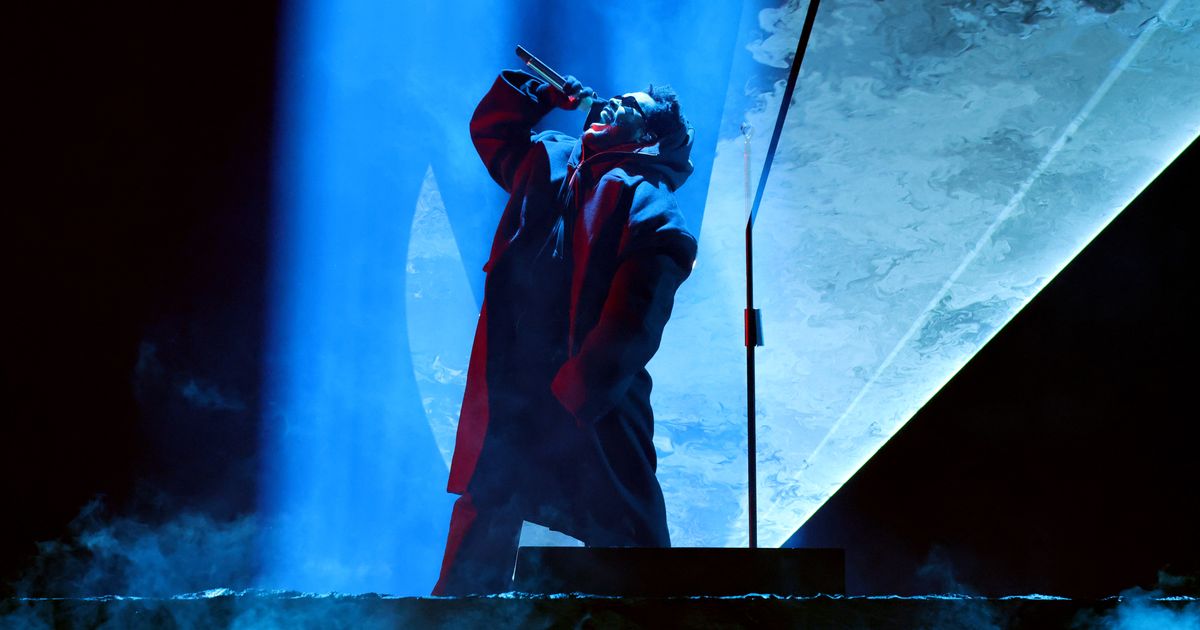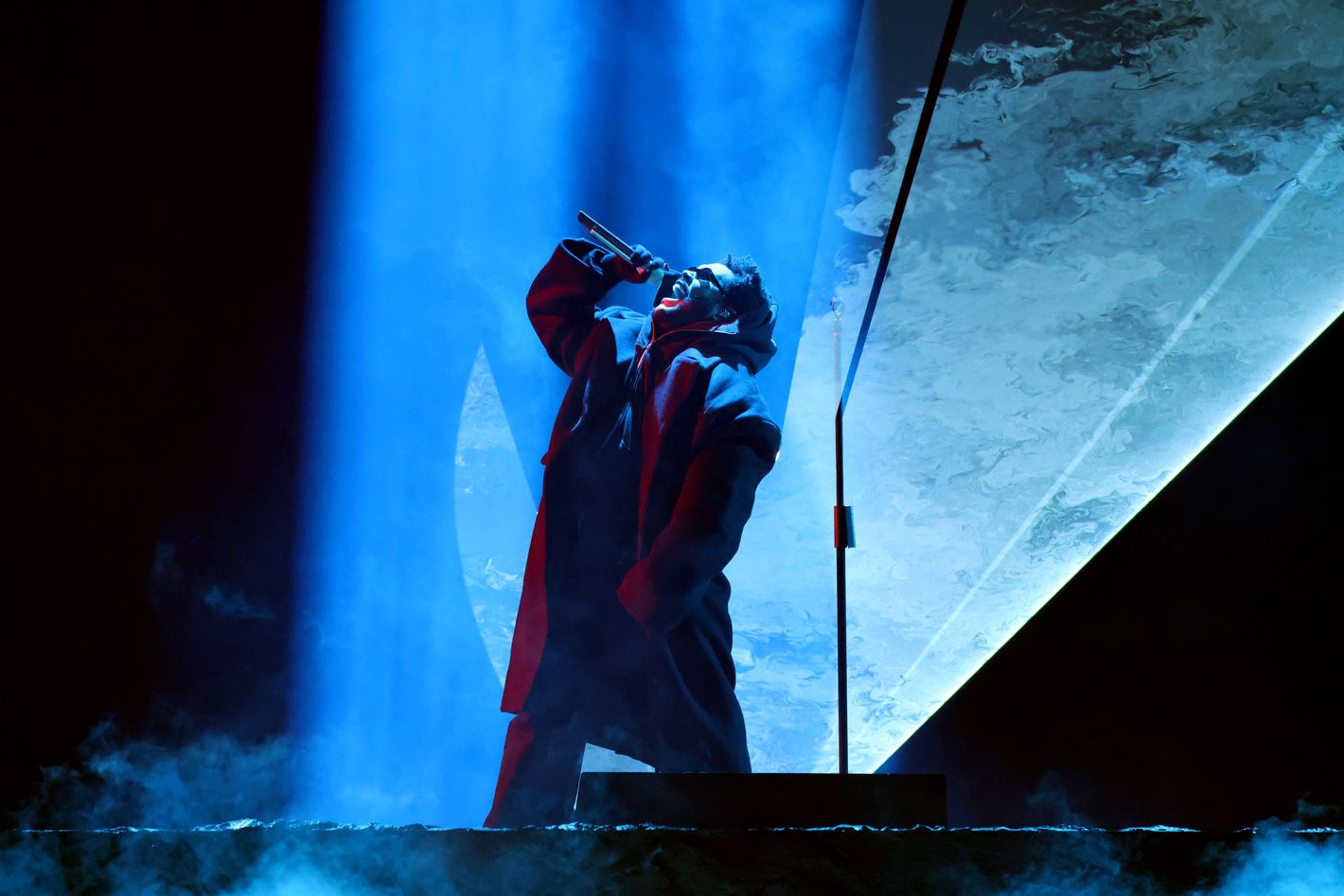The Weeknd’s Albums, Ranked
You can hear traces of his DNA everywhere.


There’s a whole wing of pop and contemporary R&B that owes a debt to the Weeknd. You can hear his direct influence on various R&B mini-mes (PartyNextDoor, Brent Faiyaz) and pop singers (Halsey, Tove Lo), who have adopted his ambience of dissociative lust. His sound even reaches back to older generations — you’ll never convince me that the Weeknd’s yearning falsetto wasn’t ringing in some dark corner of Usher’s mind when he stepped in the booth to cut “Climax.”
In the months following the release of 2011’s House of Balloons, no one knew much of anything about the Weeknd outside a few cryptic Tumblr posts and a Drake co-sign. Synthetic but gritty, licentious but charming, Abel Tesfaye’s music was full of contradictions from the jump, a dichotomy he would both benefit from and wrestle with his entire career. His evolution from a homeless teen seducing girls on his friends’ couches into an international pop star with one foot in Hollywood and the other atop the Billboard charts has been a circuitous one filled with pitfalls — and some of the catchiest tunes of the century.
Today, the Weeknd finds himself considering his own mortality and legacy, confident he’s made his mark but questioning the cost. While he once saw himself as “somebody in a nobody town,” he’s now somebody in nearly every town. As he looks in the rearview with Hurry Up Tomorrow — his latest project and potentially the final one as the Weeknd — we’ve ranked each of his nine full-length albums, weighing their impact at the time of release while also measuring his growth as a songwriter and executive producer.
9. Kiss Land (2013)
Tesfaye’s initial run of 2011 mixtapes had a strong sense of place; frigid and nocturnal, they were firmly rooted in the early-morning hours of Toronto. He followed it up with Kiss Land, a murky, nebulous space that embodies all of his nightmares. Yet, rather than serve as a launching point for an ascendant career, the album instead feels like its nadir. Here, his nihilistic ethos is processed to the point of parody. “I just love that you’re dead inside” would be a funny lyric if he weren’t so serious. It didn’t help that the production was often flat and lifeless, or that it had no standout hits. Still, there were signs of hope. He wielded his newfound backing from Republic Records for more high-octane samples, like the Police’s “Bring on the Night” on “Adaptation,” while “Wanderlust” suggested his preening falsetto was well suited for the disco-tinged pop he would perfect on his next LP. But even at its best, Kiss Land still feels like a contrived facsimile of what preceded it.
8. Starboy (2016)
By 2016, Tesfaye had fully embraced a pop-star persona, fashioning himself as the Second Coming of Michael Jackson, with sexier drugs and a penchant for projecting his self-loathing onto young women. Here, he attempts to murder the carefully crafted mystique that launched his career, tapping big names and big budgets for an opus intended to ride the wave of his first two No. 1 singles the year prior. On paper, it should have succeeded. He levels up his gift for seamless sample stitching, opening “Secrets” with words from Jeff Buckley’s mouth and interpolating two ’80s New Wave hits — the Romantics’ “Talking in Your Sleep” and Tears for Fears’ “Pale Shelter” — into a tale of an insecure lover, imagining his partner cheating on him in his dreams. He even benefits from Daft Punk’s elite-tier drum programming (“Starboy”) and effortless melodies (“I Feel It Coming”) to bookend the LP. But the 18-deep track list suffers from severe bloat, its scattered sonic palette the result of an artist trying to do too much and missing on some big swings.
7. Echoes of Silence (2011)
The third entry in the Weeknd’s Trilogy is the first evidence of his pop-star aspirations. If there were any questions about whether or not he found kinship with MJ, opener “D.D.” — his take on the King of Pop’s groupie send-off “Dirty Diana” — put them firmly to rest. The instrumental is decidedly sinister, and his vocals sound eerily similar to Michael’s. The difference is that MJ always balanced his anger with hope. You’ll find none of that here. This record is not particularly fun and often quite foul; where the lines of consent in his chemically fueled sexcapades were once blurry, the narratives — like the surprise gang bang on “Initiation” — are decidedly more sinister. Tesfaye’s darkest work to this point, Echoes benefits from its place in the Trilogy: the final act of a slow but inevitable descent through the downward spiral.
6. Hurry Up Tomorrow (2025)
The latest Weeknd record provides hope that Tesfaye has finally grown up. Its carefully scripted narrative reveals an earnest vulnerability, colored by the inner thoughts of a singer worried he can no longer sing. Of course, just because he actually has something new to say doesn’t make the 85-minute run time any less punishing. The underlying theme here is one of artistic rebirth. For the Weeknd’s supposed swan song, his influences and collaborators are numerous and disparate. He dabbles in an electro-pop take on baile funk with Anitta on “São Paulo”; he recruits Italian disco god Giorgio Moroder for the narcoleptic “Big Sleep”; and he gazes into “The Abyss” with his favorite muse, Lana Del Rey. These moments work, but as a whole, the album buckles under the weight of its creator’s grandiose vision. If it is indeed his last LP as the Weeknd, it’s a fitting though somewhat disappointing end. The album isn’t his best, but he couldn’t have made it until now; a 20-something Tesfaye would never admit that “I should’ve been sober, but I can’t afford to be boring,” or even stop to reflect beyond his most base and shallow impulses.
5. Thursday (2011)
The buzz had barely begun to fade from the Weeknd’s debut before he followed it up with Thursday, doubling down on House of Balloon’s decadence with more drug-addled dreams from the after-after-party. The record leans heavily into the synthetic textures that colored his first project — bleeding bass, gauzy synthesizers, skittering hi-hats — though it’s missing some of its catchier melodies. The subject matter remains lascivious yet somehow empathetic (partial credit goes to Drake’s guest turn on “The Zone,” with his concern for strippers’ broken hearts). And it’s still early enough for Tesfaye to doubt on “Rolling Stone” that his success is assured: “And I’mma keep on smoking till I can’t hit another note / But until then I got you / Until you’re used to my face and the mystery fades.” The songwriting isn’t quite as polished as it would get later in his career, but Illangelo and Doc McKinney’s mix is masterful, smearing Tesfaye’s voice with reverb in otherwise empty space and sprinkling rich analog textures amid the waves of digital distortion. Immersive and intoxicating, Thursday embodies just how good self-destruction can feel.
4. Dawn FM (2022)
More than a decade into a career full of songs about the various ways one can self-destruct, Dawn FM is what happens after the inevitable demise. For this concept album Tesfaye recruits his actual neighbor Jim Carrey, who stands in as a meditative disc jockey broadcasting commercials for the afterlife. By now, the Weeknd had racked up enough No. 1 hits to be supremely confident as a songwriter, and the loose concept helps keep the lengthy track list on the rails. It’s texturally gorgeous, melding Oneohtrix Point Never’s sci-fi synths with Max Martin’s musical mathematics on tracks like “How Do I Make You Love Me?” and “Is There Someone Else?” More than anything, the rearview mirror POV allows for the Weeknd’s most honest self-reflection to date, offering explorations into his own psyche without prejudice or celebration, something that didn’t seem possible before. For the notorious 5 a.m. nihilist, purgatory is a tough place to question what you believe: “I’m staring into the abyss,” he sings on “Gasoline,” “I’m lookin’ at myself again / I’m dozing off to R.E.M. / I’m trying not to lose my faith.”
3. Beauty Behind the Madness (2015)
After the disappointment of Kiss Land, the Weeknd managed to pull off a rare feat, course-correcting out of the creative dead end he’d been circling with his new production team. For Beauty Behind the Madness, he leans on his early collaborator Illangelo to reclaim some of the swagger and sonic texture from his early mixtapes, while wielding a big enough budget to recruit Max Martin for the first time. The resulting cocktail splits the difference between his familiar formula and the radio-ready hooks of mainstream pop, delivering “Can’t Feel My Face” — one of the catchiest tunes the Weeknd has ever recorded — by swapping Tesfaye’s typically overt explicit references for implausibly deniable imagery delivered with a wink and a nod.
But that song’s potential is obvious to anyone with ears; it’s “The Hills” that was most surprising. Its slumped trap beat and R-rated hook (“When I’m fucked up, that’s the real me”) makes it sound less like a radio single and more like it was pulled from Illangelo’s Thursday sessions. There are enough hits on the album that peak-Kanye (“Tell Your Friends”) isn’t even the third best track (that would be the dick-swinging braggadocio vehicle “Often”). With Beauty Behind the Madness, Tesfaye figured out how to level up as a songwriter, evolving from a vibe lord who writes mood pieces with eyebrow-raising lines into a pop superstar firing off world-conquering hooks.
2. After Hours (2020)
The Weeknd was already a huge star when After Hours dropped, but this is the record that helped put him on the Super Bowl stage. Hours is a perfectly polished synth-pop record, evidenced by “Blinding Lights,” the catchiest hit of his career — and quite possibly the last decade. The Weeknd doesn’t abandon his love for early-morning pharmaceuticals, but it’s a testament to how sophisticated his songwriting has become that he can name-drop weed, coke, MDMA, and Xanax in a single song (“Faith”) without sounding completely goofy. It’s different enough from the initial Trilogy that the uninitiated could be forgiven for thinking it was a new artist altogether. It’s unlikely he would have been able to make such a record even five years prior, seamlessly blending U.K. garage (“Too Late”), jungle breaks (“Hardest to Love”), and electro-psychedelia (“Until I Bleed Out”) into cinematic drama. Sure, lyrically, the Weeknd still loves drugs, suffering from success, and treating women as a consumable resource, but the movie’s so good that you don’t mind watching it over and over again.
1. House of Balloons (2011)
Nocturnal, brooding, and drenched in self-loathing, House of Balloons remains one of the most compelling debuts from an R&B singer this century. In some ways, the Weeknd is still chasing the high from this record, an irresistible mood piece cloaked in mystery. With clever interpolations of left-of-center samples from Beach House (“The Party and the After Party” and “Loft Music”) and Siouxsie and the Banshees (“House of Balloons”), Tesfaye croons soulless lyrics over soulful compositions, grooming groupies and corrupting the innocent. It’s equal parts lecherous and melodic, capturing just a sliver of the thrill of the dangers of self-destruction.
This record served as the public’s introduction to the character that is the Weeknd. This wasn’t pop music, it was the soundtrack for doing things you’d be ashamed to tell your mom about. The mystique in and of itself wasn’t as interesting as how it allowed you to project your own image onto the music. McKinney and Illangelo’s deft feel for negative space makes every vibration even more tactile; from the first notes on “High for This,” the reverberations are hypnotic.
When House of Balloons dropped, nothing else in R&B sounded like it. Today, you can hear traces of its DNA all over the pop charts. The Siouxsie “Happy House” interpolation and the Beach House samples (rightfully) get much of the attention, but the sleeper hit is “Wicked Game,” which establishes the sonic palette for the best songs of this era — soft, airy textures juxtaposed with pummeling drums, distorted guitar, and that gorgeous falsetto. Tesfaye could make exactly zero references to getting high, and this music would still sound like drugs. It will likely never hit like it first did, but then again, it never does, does it?
Related








